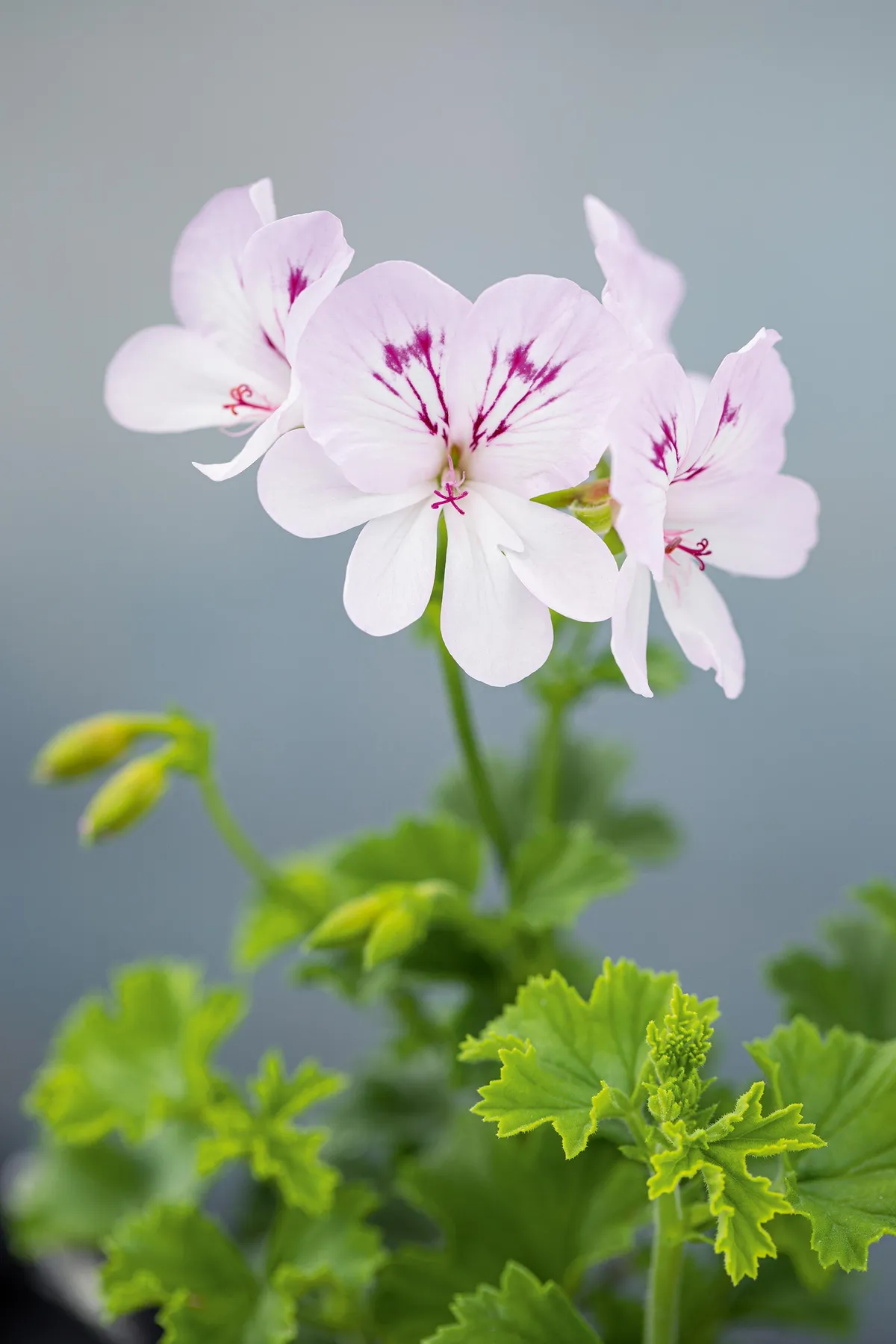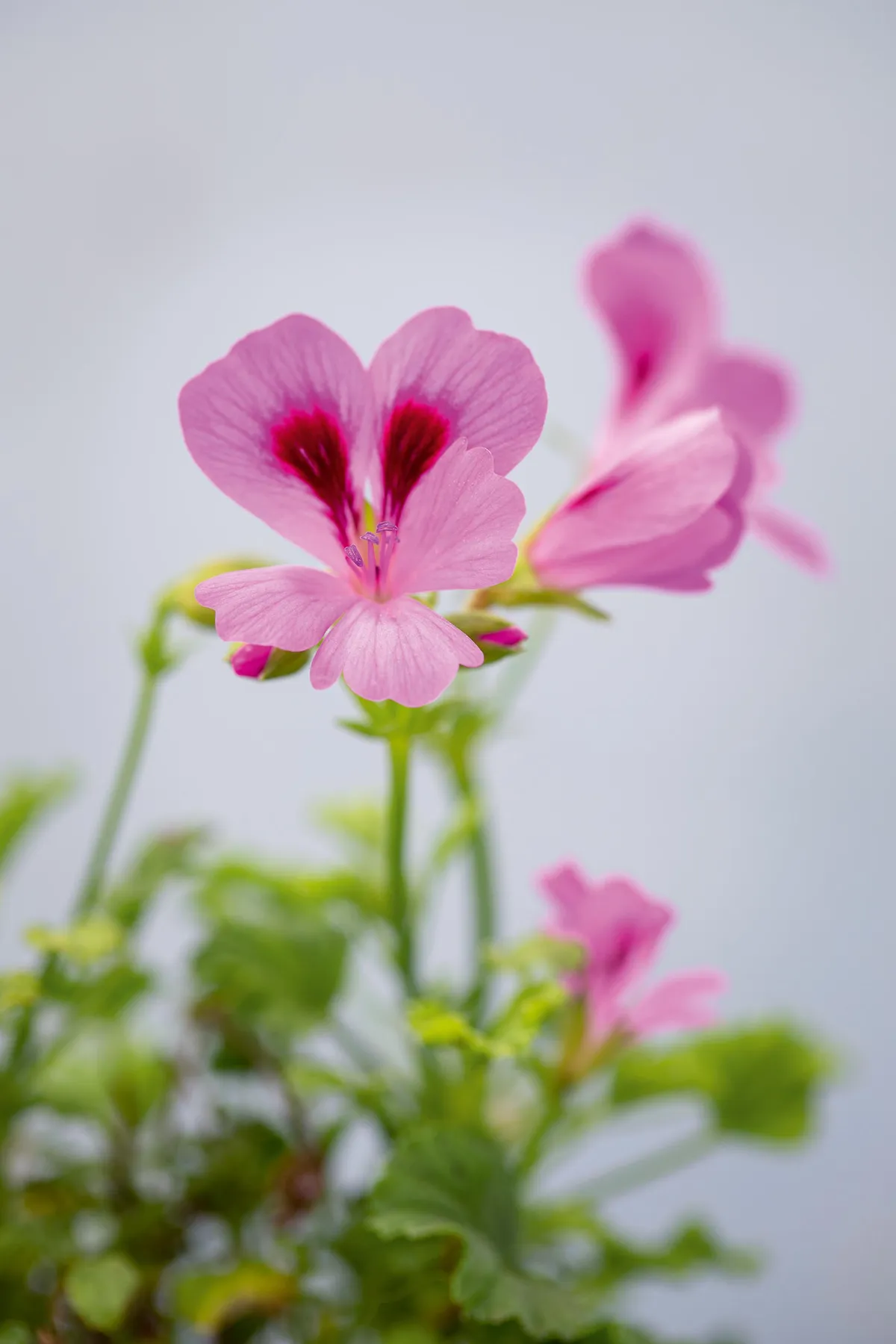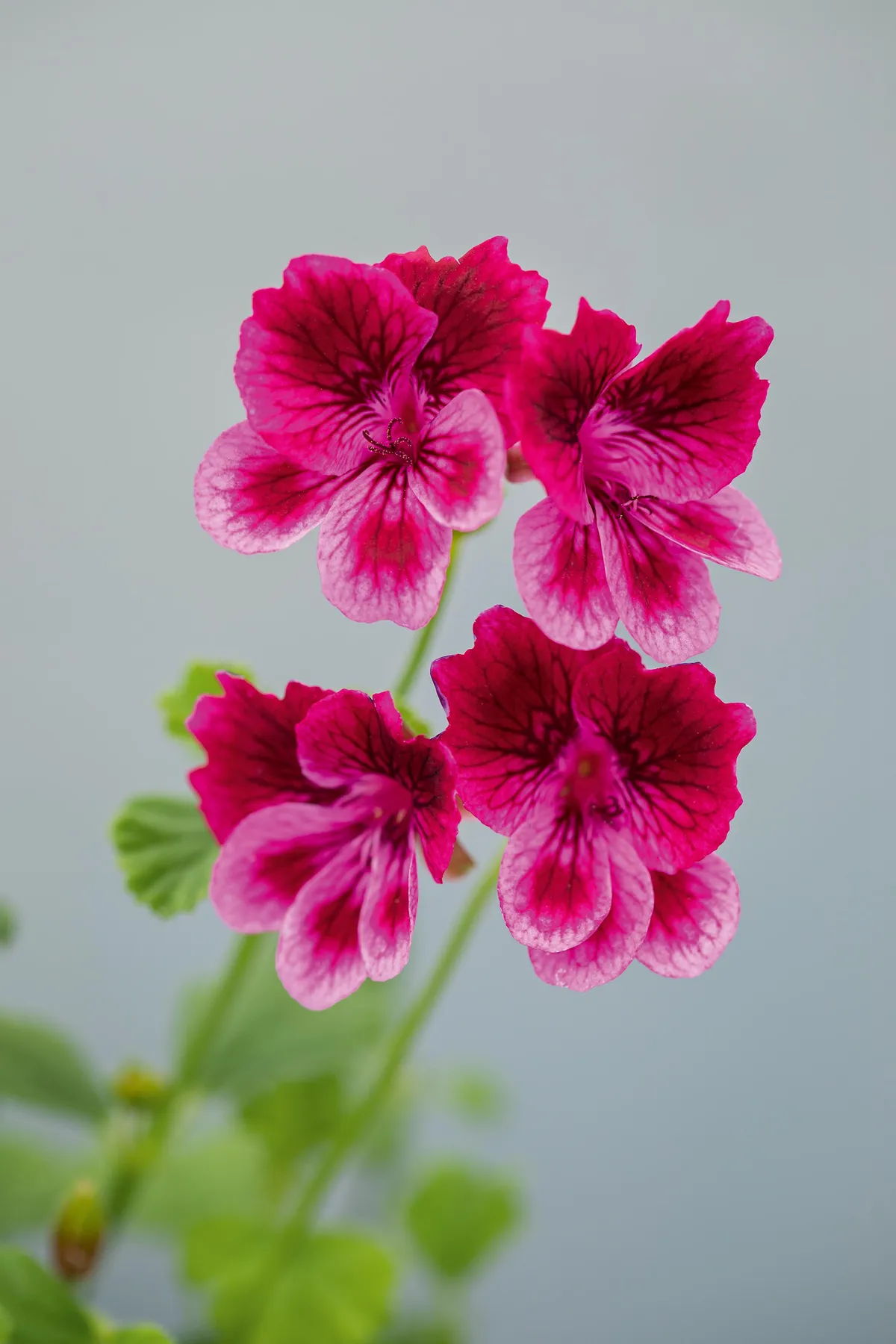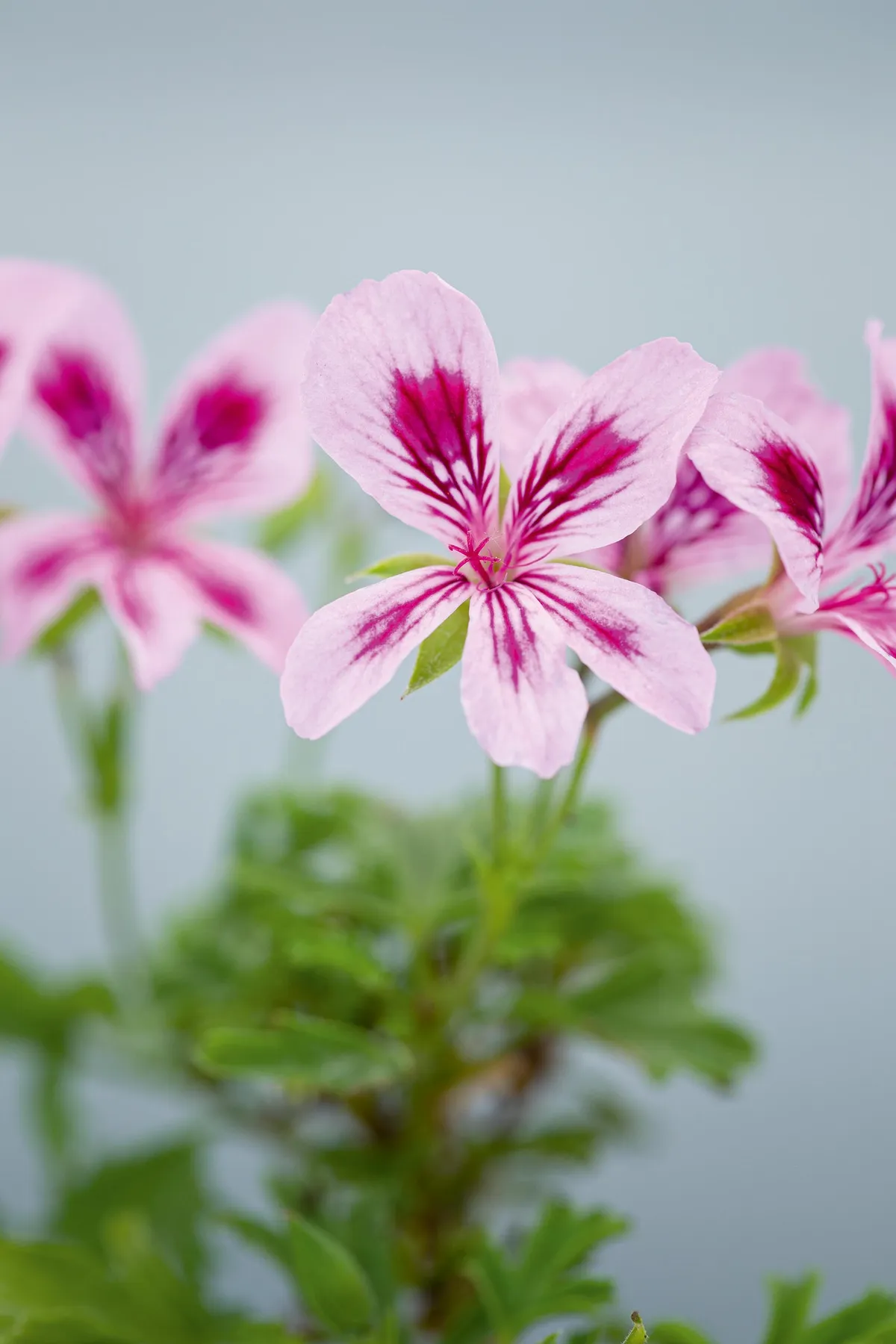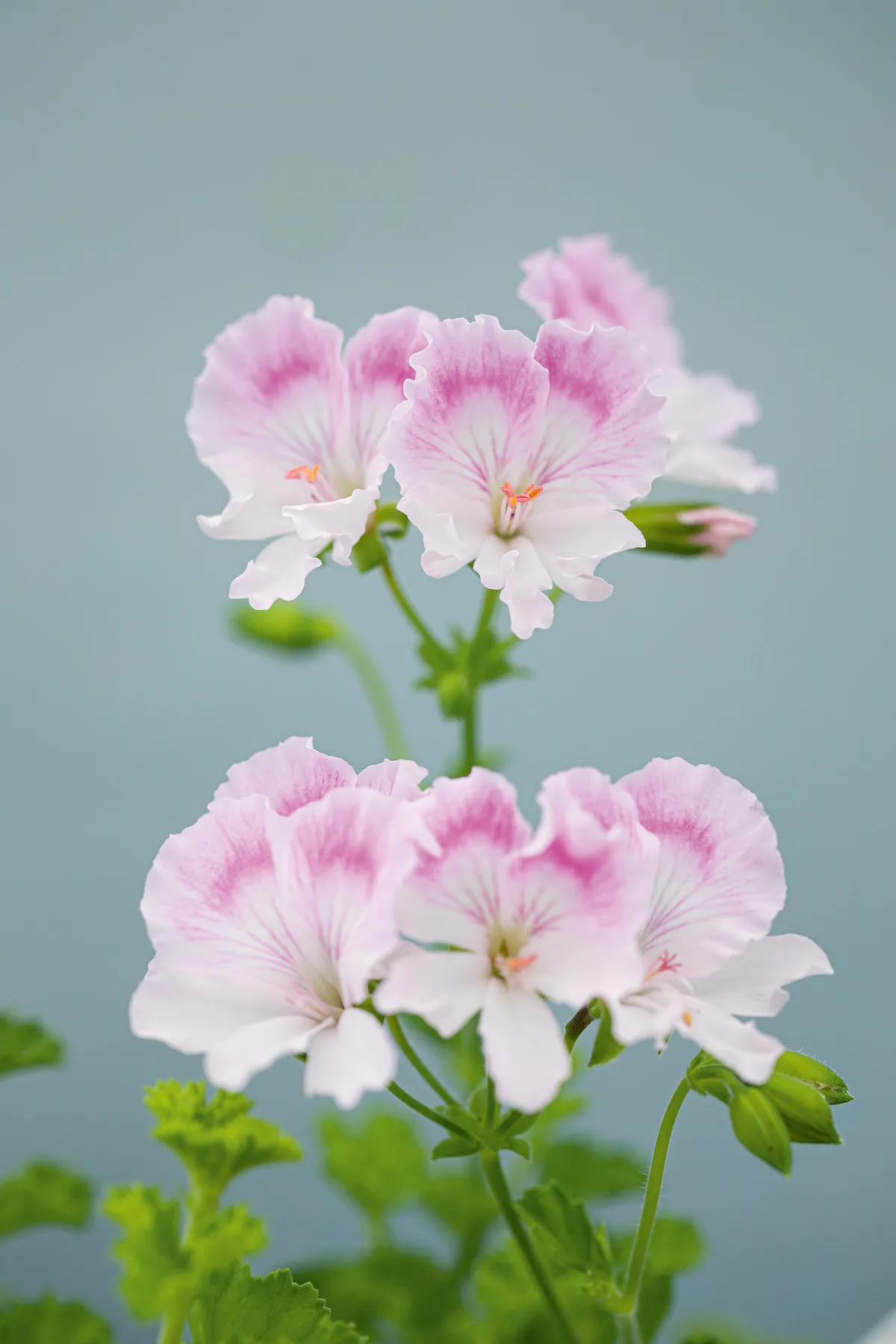The florist’s pelargonium has been established as a house and garden favourite since Pelargonium triste arrived in Europe in the 1600s and P. zonale was grown by the Duchess of Beaufort in the early 1700s. The popular pelargonium P. peltatum, commonly but wrongly referred to as the ivy-leaved geranium, arrived in Europe from the Cape of Good Hope via Leiden, in the Netherlands, in 1700 and Francis Masson (1741-1805), who collected in South Africa for the Royal Botanic Gardens, Kew, added 102 new species.
By the 1820s, pelargoniums were well established in home and garden; the London nursery of James Colvill offered around 500 cultivars and hybrids and Robert Sweet (1783-1835), who used plants from Colvill’s collection for breeding, is widely recognised as the pioneer hybridiser in Britain. Regal pelargoniums resulted from a cross between P. cucullatum and P. grandiflorum, with other species being added to the blend by breeders such as William Bull of the King’s Road in Chelsea, London.
Forms and sizes
Angels range in size, from dwarf, compact forms that tumble over the edge of pots, such as ‘Jer’Rey’ with its rich-purple flowers edged with crimson (bred by J Kapac in Southern California), to ‘Imperial Butterfly’, a simple white with purple feathering (fine lines) on the upper petals, with good foliar fragrance and a neat, compact habit, which in time can reach 1.2m tall. There is also a cascading cultivar, ‘Quantock May’, which is ideal for growing in long toms and hanging baskets.
The flower colours range through shades of rich burgundy to cerise, blackcurrant, pink, white and coral. Surprisingly for a pelargonium, there are no reds; Angels are the only group lacking this traditional colour. It remains the Angel enthusiast’s holy grail, proving that a breeder’s work is never done.
How to grow Angel pelargoniums
Angel pelargoniums are easy to grow. The key is to provide at least 2.5cm of space around them to allow good airflow. They should be planted individually in pots – place too many plants around them and they die back. In warmer climates they can be grown outdoors all year round, and in cool temperate locations they make wonderful outdoor summer displays.
Where to grow Angel pelargoniums
Given their need for good air circulation, as well as their habit and profusion of flowers, pelargoniums make ideal specimen plants. Grow them in individual pots on tiered displays or steps leading to a sunny front door; against brick or natural stone; atop plinths in classical or contemporary pots; or in table displays.
They associate well with plants with silvery or grey foliage, including the dark purple-blue flowered Lavandula angustifolia ‘Peter Pan’, Helichrysum, Senecio cineraria ‘Silver Dust’, clipped Santolina chamaecyparissus or Dichondra argentea ‘Silver Falls’. They also look sumptuous against plants with darker foliage, such as Ophiopogon planiscapus ‘Kokuryu’, or in contrast with Calibrachoa 'Can-can Double Blue'. Dark evergreens, such as Hedera helix ‘Baltica’ or Taxus baccata, complement or contrast.
Angels need as much light as possible, but should be out of direct sunlight when grown in a greenhouse, to avoid scorching. Plants grown outdoors need direct sunshine to flourish.
Compost and watering
Angel pelargoniums grow very happily in peat-free compost, or if you prefer, in a 50:50 mix of multi-purpose compost and peat-free John Innes No. 2. Grow them in terracotta pots.
Err on the dry side when watering and avoid overwatering; soak the root ball, and allow the compost to dry out before watering again. For the best floral displays, feed with half-strength tomato feed or other high-potash feed every time you water during active growth. Pinching out is essential to create dense, bushy plants. Always leave three active nodes, then pinch out with your thumb and fingernail or use sharp scissors.
Feeding
Start to encourage growth in mid-spring with a little water, gradually increasing the volume as growth increases. Once the plants have started growing, feed with half-strength general fertiliser, then change to high-potash tomato fertiliser once they are in active growth.
Caring for Angel pelargoniums over winter
As a minimum, keep plants free from frosts over the winter, but ideally they should be at just above 5ºC. Keep the root ball dry to avoid root rot. In cool conditions, remove the leaves, leaving bare stems. This improves air circulation around the plants, and watering is unnecessary.
The best Angel pelargoniums for your garden
Pelargonium ‘Berkswell Harmony’

A highly distinctive, two-toned cultivar with burgundy upper and pink lower petals and intricate claret ‘feathering’ (fine lines). It’s tall, and needs staking. Aim for three to four leaders initially with constant pinching out to create a full bush that eventually supports itself. 60cm. RHS H1C.
Pelargonium ‘Georgina Forever’
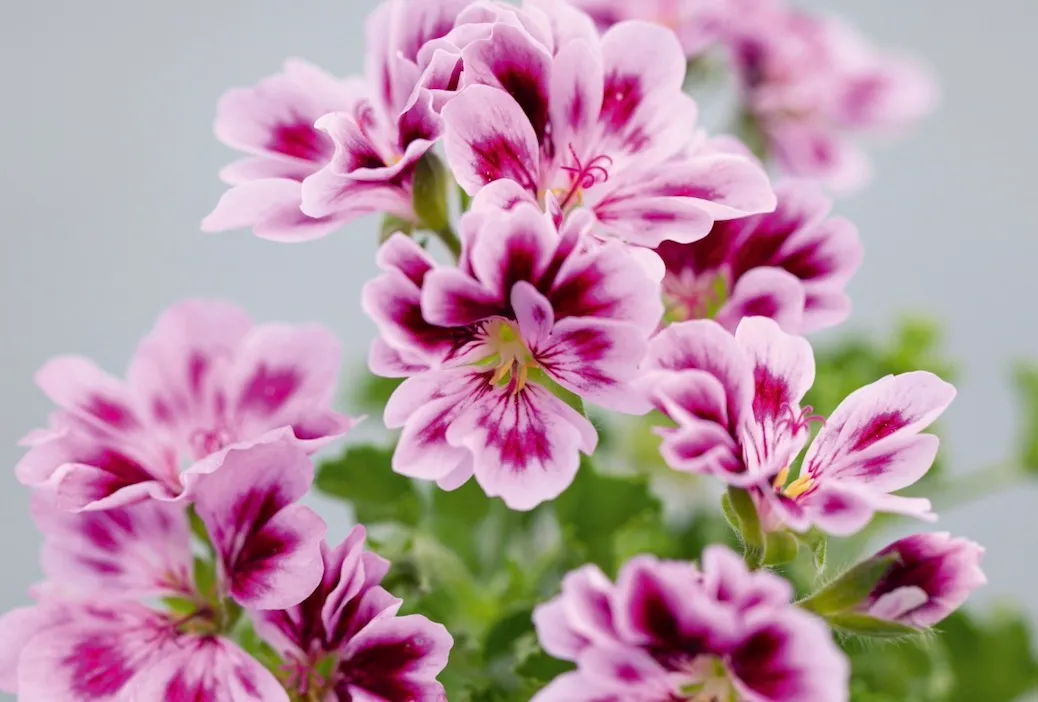
A popular, recent introduction from 2018. This easy-to-grow, upright Angel is a compact plant with lilac flowers, purple blotches and feathering on the petals. The highly distinctive, split petals, which create the illusion of it being double-flowered, add to its desirability. 90cm. RHS H1C, USDA 9b-13.
Pelargonium ‘Black Knight’
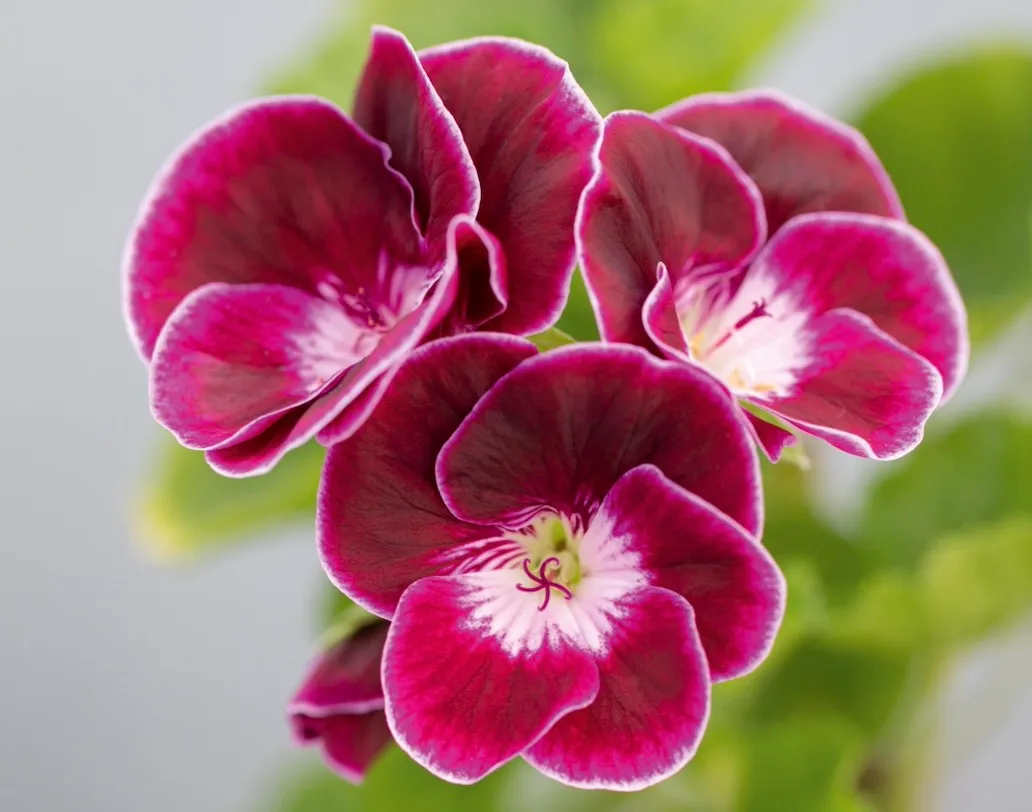
This very pretty, old, vigorous Angel is compact and bushy, with glossy, dark-green leaves that are unusually large for this group. The flowers are neat, dark purple and edged white with a white throat, and are very lightly feathered. 70cm. RHS H1C, USDA 9b-13.
Pelargonium ‘Eskay Saar’
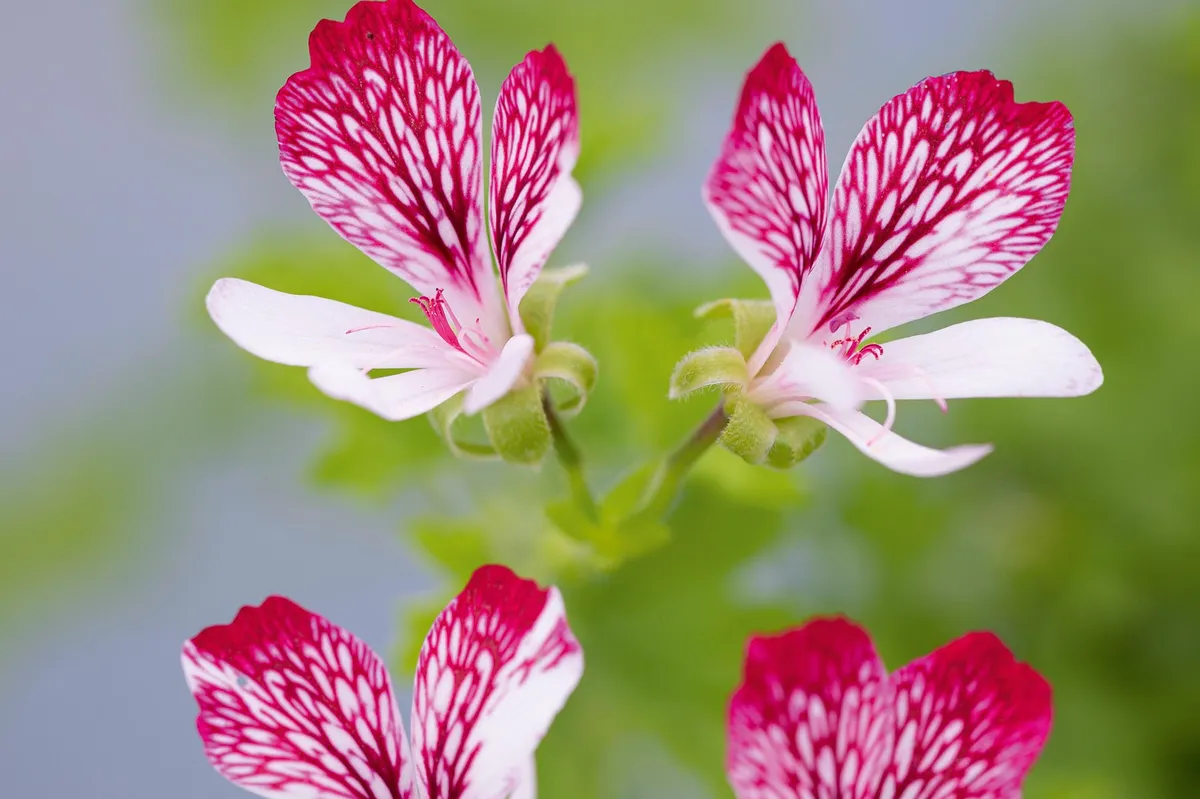
A gorgeous, compact plant with large, highly distinctive upper petals of cherry with purple feathering against a pure-white background. The lower petals are thin, white and faintly feathered. This is one of the finest examples of feathering in any pelargonium. 45cm. RHS H1C, USDA 9b-13.
Pelargonium ‘Ursula’s Choice’
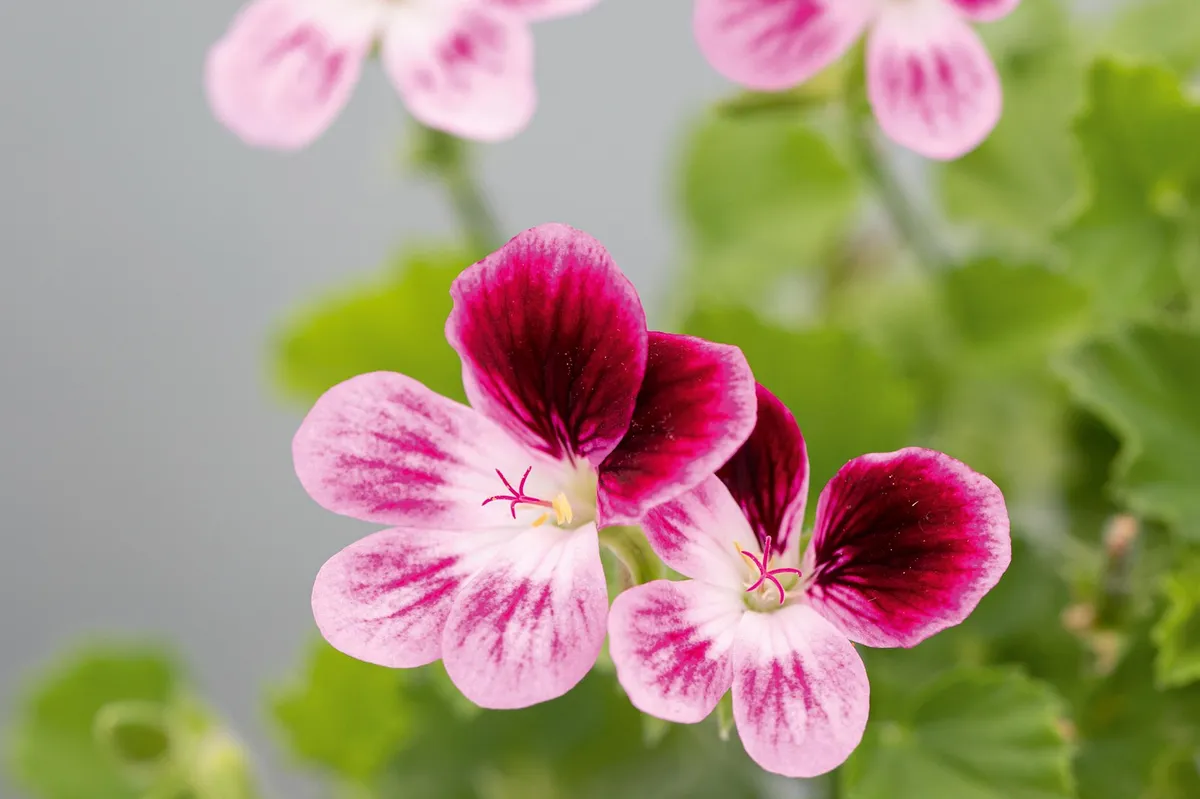
Tall, bushy and easy to grow, with masses of small flowers. The lower petals have lavender-purple veins and the dark-purple upper petals are blazed with a white throat. It was raised in the UK by enthusiast and breeder Des Glover. 40cm. RHS H1C, USDA 9b-13.
Pelargonium ‘Cottenham Wonder’
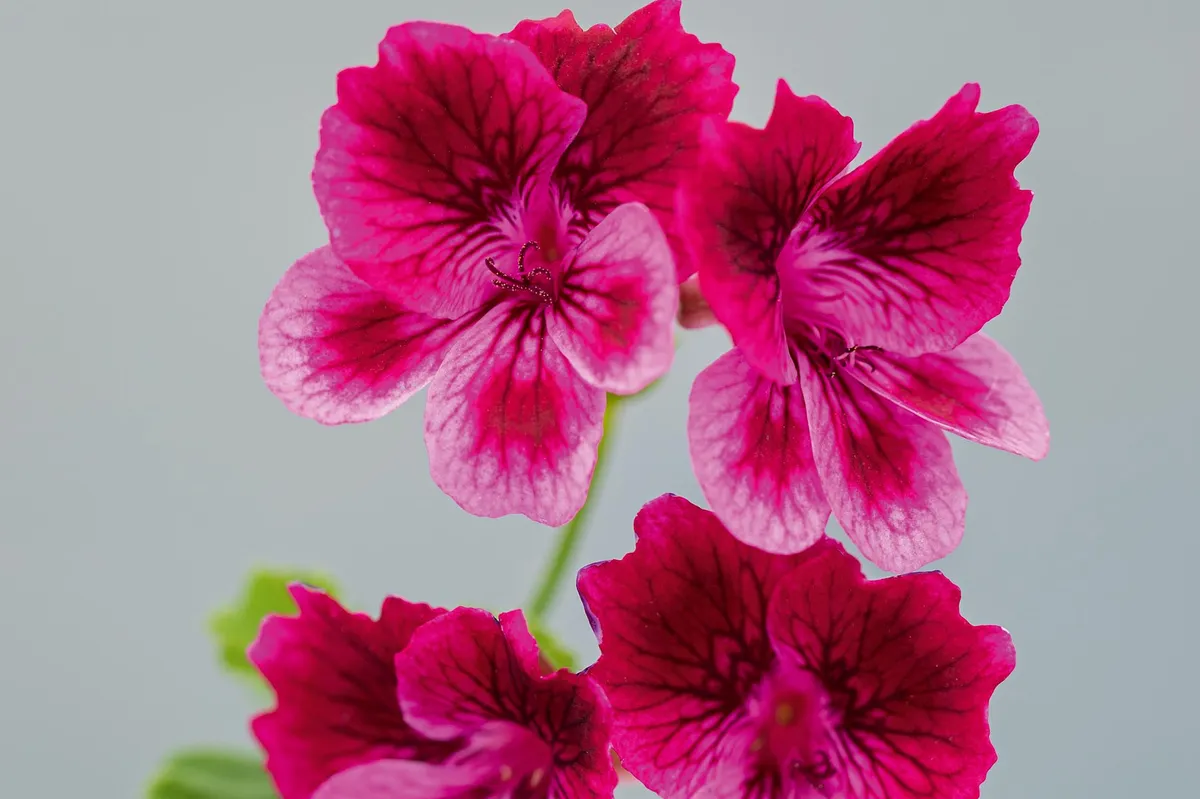
A strong grower with an upright habit, producing a profusion of rose-pink flowers, with overlaid dark-red upper petals that have a red blotch and similar red feathering on the lower petals. Excellent as a cut flower. 40cm. AGM*. RHS H1C, USDA 9b-13.
Pelargonium ‘Mole’

Bred in the UK and first introduced in 1994, this strong-growing, upright, bushy cultivar boasts showy, pale-lavender lower petals with purple feathering over a long season. The upper petals are deep burgundy-red, feathered dark red. 30cm. RHS H1C, USDA 9b-13.
Pelargonium ‘Berkswell Bolero’
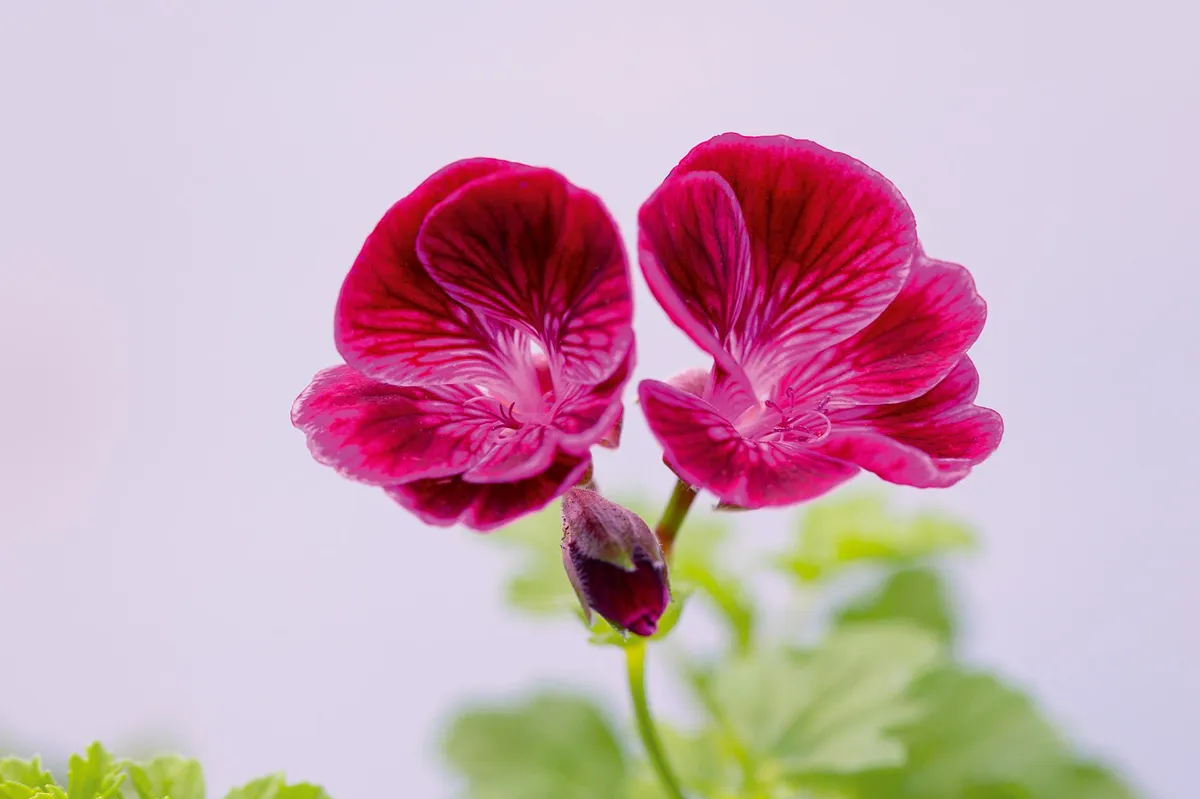
This recent 2018 addition bred by Malcolm Harris is covered in mauve flowers with a burgundy blotch and feathering. Not quite dwarf but dense and compact, the opulent magenta colouring catches the light beautifully. 50cm. RHS H1C, USDA 9b-13.
Pelargonium ‘Charmaine Marjorie’

This is quite a different style of Angel, short and bushy and with deeply cut leaves. The simple, delicate flowers are light mauve-pink with dark-purple flashes on the lower petals, and larger flashes and feathering on the upper petals. 30cm. RHS H1C, USDA 9b-13.
Pelargonium ‘Moon Maiden’

A pretty plant, notable for its unusually large flowers for this group. The plant is well branched and the simple yet attractive blooms are almost white with a hint of lilac in the upper petals and delicate, purple blotches and feathering. 25cm. RHS H1C, USDA 9b-13.
Pelargonium ‘Spanish Angel’
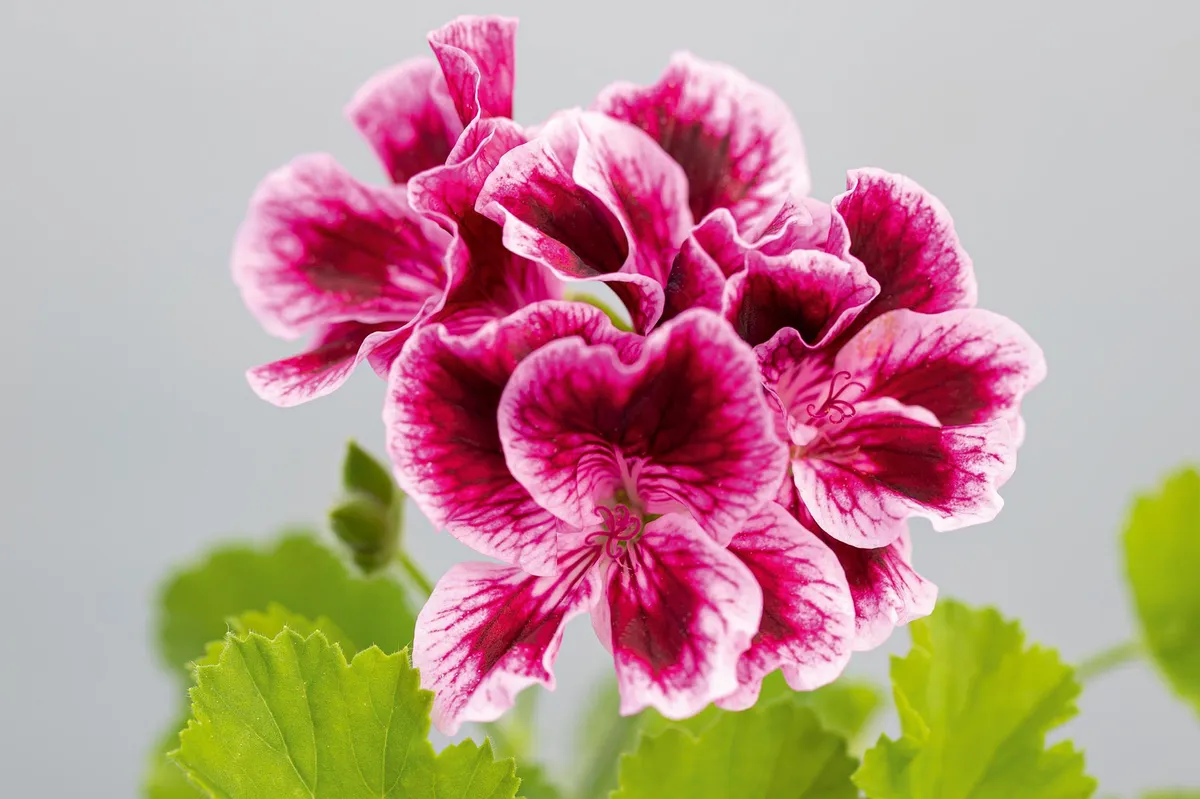
Compact and neatly shaped yet bushy, with strong markings and light feathering on the lower petals. The upper petals have bold burgundy markings. Its hirsute nature creates a distinctive aura around the plant. 30cm. AGM. RHS H1C, USDA 9b-13.
Pelargonium ‘April Showers’
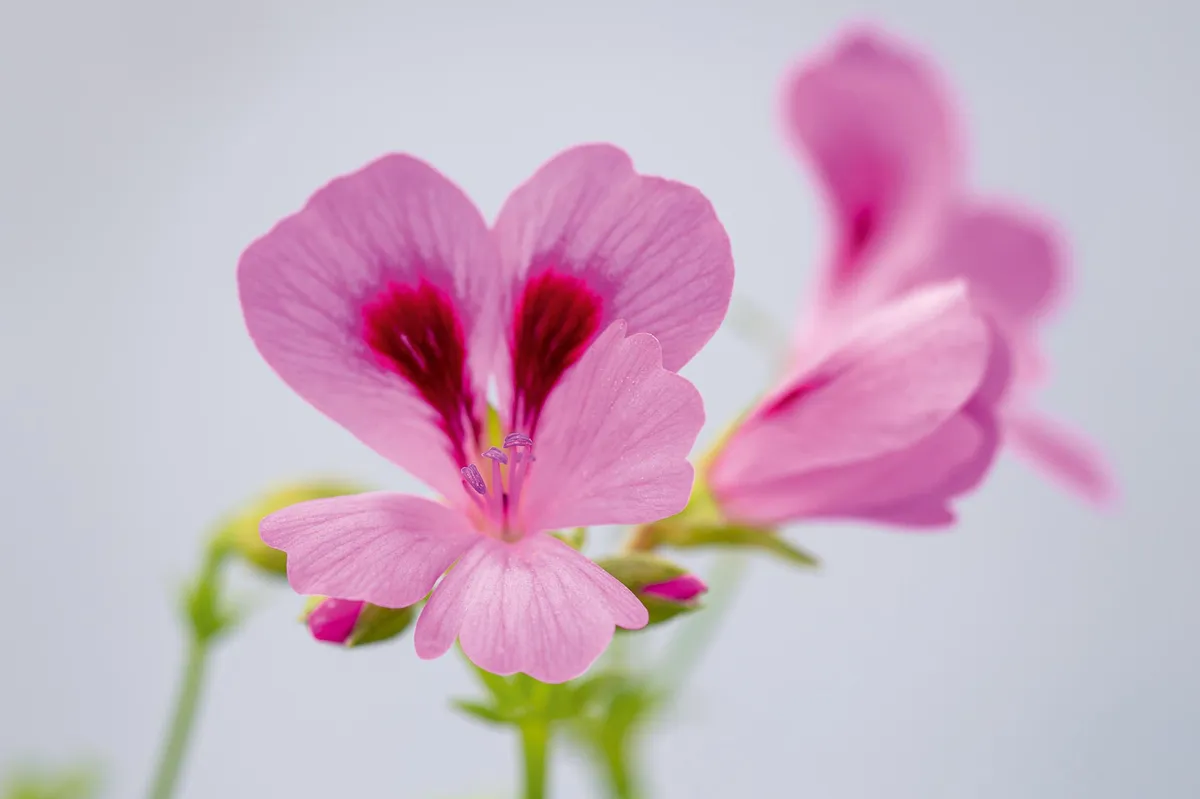
A neat, well-shaped, floriferous plant that is one of the earliest to flower. The flowers are a soft lilac-pink, with a white throat and purple-red splashes on upper petals. Introduced in 2001 by breeder Derek Lloyd Dean. 45cm. RHS H1C, USDA 9b-13.
Pelargonium ‘Quantock May’

Introduced in 1999, this plant has a lax, trailing habit that is unique among Angels. The frilly flowers are white, with the upper petals flushed pale pink with fine cerise feathering. A pretty, understated, very floriferous plant. 50cm. RHS H1C, USDA 9b-13.
